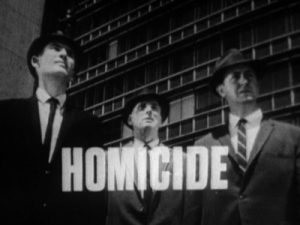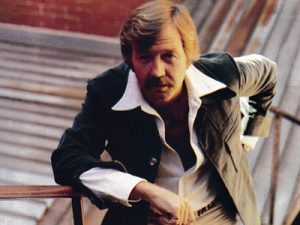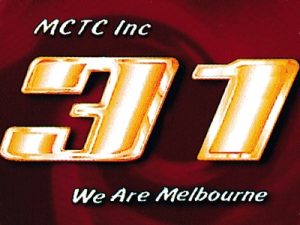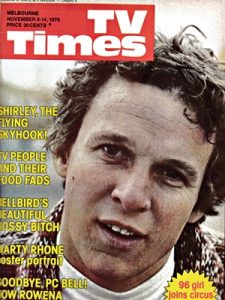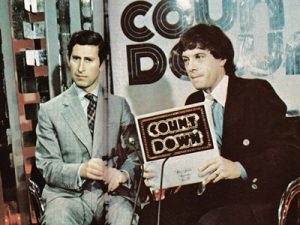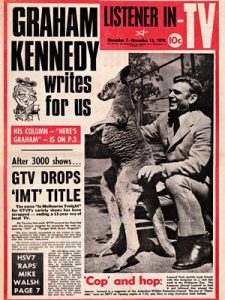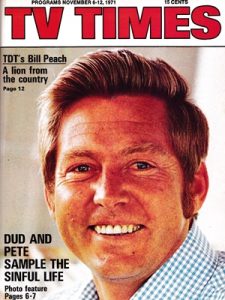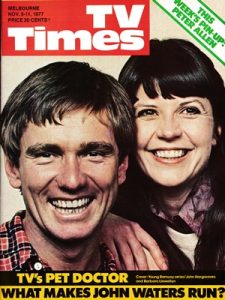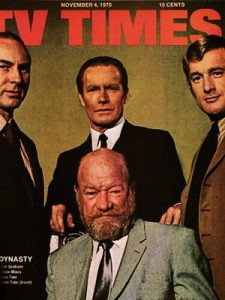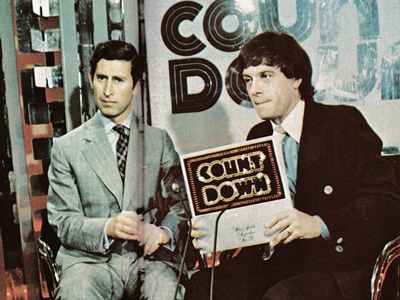
Countdown, the show that epitomised the pop music scene in Australia for over a decade, made its debut 50 years ago today.
Produced at ABC‘s Melbourne studios, Countdown was initially commissioned for six half-hour and two one-hour programs to air on Friday evenings in November and December 1974. The new show was six months in planning and was the creation of producers Michael Shrimpton and Rob Weekes, joined by talent co-ordinator Ian ‘Molly’ Meldrum, who described his role to TV Times: “I have to sort out what I think will be a balanced line-up of artists with songs in the charts and then go to producer Rob Weekes, who either agrees or disagrees. Depending on his reaction we then start thrashing out the little details, such as how we are going to present each act.”
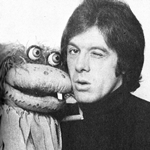 Meldrum was a music journalist, born in country Victoria, who’d had a stint working in London and when back in Australia appeared on pop music programs Kommotion and Uptight and had been a writer for Go-Set magazine (where the ‘Molly’ nickname was bestowed on him). At the time of Countdown‘s launch he was also a presenter (pictured) on a children’s program, Anything Can Happen, from Melbourne’s HSV7. While he was initially not intended to appear on camera on Countdown, Meldrum was later persuaded to present a news/review segment on the show. His enthusiasm, knowledge and rapport with performers, both Australian and overseas, made him the show’s ultimate trademark and an industry legend. His words “do yourself a favour”, as much as ABC could not be seen to be endorsing a commercial act, could instantly make a song a hit.
Meldrum was a music journalist, born in country Victoria, who’d had a stint working in London and when back in Australia appeared on pop music programs Kommotion and Uptight and had been a writer for Go-Set magazine (where the ‘Molly’ nickname was bestowed on him). At the time of Countdown‘s launch he was also a presenter (pictured) on a children’s program, Anything Can Happen, from Melbourne’s HSV7. While he was initially not intended to appear on camera on Countdown, Meldrum was later persuaded to present a news/review segment on the show. His enthusiasm, knowledge and rapport with performers, both Australian and overseas, made him the show’s ultimate trademark and an industry legend. His words “do yourself a favour”, as much as ABC could not be seen to be endorsing a commercial act, could instantly make a song a hit.
While the Eurovision Song Contest is referred to as the show that launched Swedish supergroup ABBA, they were almost destined to become something of a one-hit wonder after the initial buzz of their Eurovision win had died down. It was Meldrum’s insistence on playing the film clip of another ABBA song, Mamma Mia, that led to it being released as a single, only in Australia, and its chart-topping success sparked the attention of record companies overseas and hence triggering the group’s massive success.
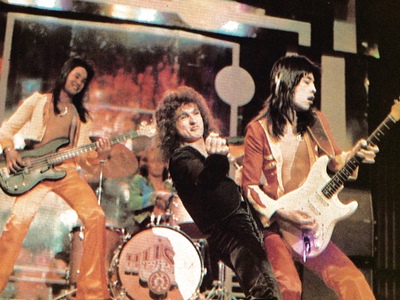
Countdown‘s launch came just as Australian pop music was entering a new phase — with groups like Sherbet, Skyhooks and Hush (pictured above) hitting the scene along with performers including Debbie Byrne, Linda George and William Shakespeare — and Australian TV was in the final stages of making the transition into colour.
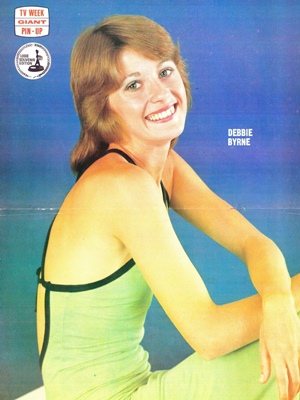
The show’s format was unashamedly Top 40 based, with a mix of studio performances and music video clips, which were a rarity at the time. Every week the show was hosted by a guest presenter — initially employing radio announcers (Grant Goldman, then from Melbourne’s 3UZ, hosted the first show) but later changed to pop stars — not that they were any more eloquent.
The show proved an instant hit with viewers and ABC management, who set about renewing Countdown for a 44-week run in 1975 well before the eight episodes had been completed. Countdown also had the support of the industry, with pop star manager Kevin Lewis crediting the ABC’s initiative. “We’ve needed a show like this for a long time and the ABC is really doing a great job to promote Australian talent,” he told TV Week in December 1974. But not everyone was in full support, with press reports suggesting that some pop artists were critical of the performance fees being offered to appear on Countdown, leading Meldrum to defend the show: “All artists appearing on Countdown are paid well above equity rates, which is a lot more than they receive on other TV programs. The ABC is spending a great deal of money to make the show a success and to give Australian talent the exposure it needs.”
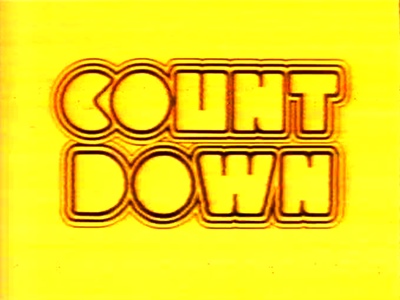
TV Times critic FC Kennedy observed that one of Countdown‘s strengths was to involve studio audiences in the program, with eager teenagers crowding around the stage and dancing, and often screaming, to their pop favourites — a theme similar to the early days of the long-running Bandstand — and implored producer Rob Weekes not to take Countdown down the same path as Bandstand eventually did, which was to dissuade its young studio audience from dancing or wearing casual attire and soon ushered them out of camera shot altogether:
“Bandstand ceased to be what it was originally — a lively studio-party for teenagers, and became another Australian “variety” show, with predictable results. So my advice to producer Weekes is to continue booking popular entertainers who have been made popular by the younger generation, turn thumbs down on any suggestion the production numbers, dancers, resident choruses or elaborate scenery be introduced and set his face firmly against any changes in format. Let the kids dance, scream or do anything else that doesn’t violate the Police Offences Act — or whatever code of behaviour applies to Melbourne, the city in which Countdown is produced. Producing a teenage show aimed exclusively at teenagers may be a revolutionary idea in Australia, but at least it is worth a try.”
TV Times readers agreed that the new show was immediately engaging with a teenage audience. “Countdown is the show all us neglected teenagers need,” wrote one reader from Maryborough, Queensland. “Now there is Countdown. We have only seen the first show but cannot wait for the next. It is making us all wish we had colour TV,” wrote another from Broken Hill, NSW.
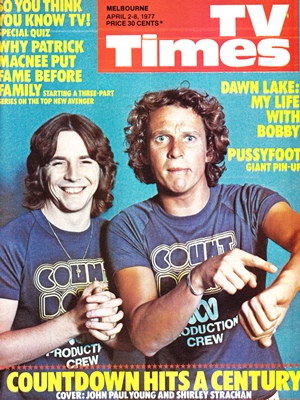
Countdown ended its 1974 season with two one-hour shows — a Christmas special, with Skyhooks’ Graeme ‘Shirley’ Strachan making his TV hosting debut, and a New Year’s edition hosted by Sherbet’s Daryl Braithwaite.
Such was Countdown‘s immediate impact from its eight-week debut that its return for 1975 was scheduled to be the first program to be broadcast on ABC upon the official start of colour television in Australia, appearing just after 12.00am on Saturday 1 March, with frequent TV Week King Of Pop winner Johnny Farnham hosting the show. The show then settled into its regular Sunday night 6.00pm timeslot with a repeat the following Saturday.
YouTube: ABC iview
Broadcasting in prime time across ABC’s network of transmitters covering much of the Australian population, Countdown gave music acts an exposure not matched by any other medium, including commercial television. The show was also without a great deal of competition from commercial television — with Seven’s Saturday morning Sound Unlimited (later Sounds) being the only significant rival. With such a widespread audience reach, Countdown featured not just any Australian act but also anyone visiting from overseas would inevitably end up performing to the Countdown crowds at Studio 31 at ABC’s Ripponlea studios in Melbourne.
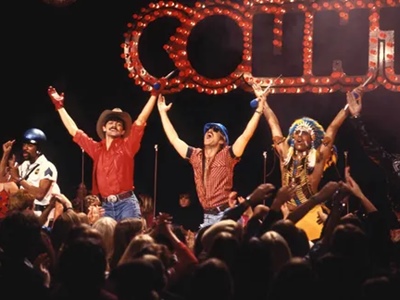
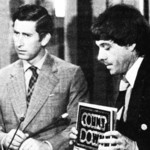 In November 1977, to promote a Queen’s Jubilee Fund album that had just been released, Countdown featured a guest appearance by Prince Charles — leading a physically nervous Molly to make reference to seeing the Prince’s “mum” when in London recently, to which Prince Charles coolly replied, “you mean Her Majesty The Queen”. The gaffe was edited out before going to air but inevitably became part of the show’s folklore. In 2014, to commemorate Countdown‘s 40th anniversary, Prince Charles paid tribute to that moment in the show’s history.
In November 1977, to promote a Queen’s Jubilee Fund album that had just been released, Countdown featured a guest appearance by Prince Charles — leading a physically nervous Molly to make reference to seeing the Prince’s “mum” when in London recently, to which Prince Charles coolly replied, “you mean Her Majesty The Queen”. The gaffe was edited out before going to air but inevitably became part of the show’s folklore. In 2014, to commemorate Countdown‘s 40th anniversary, Prince Charles paid tribute to that moment in the show’s history.
YouTube: ABC iview
In 1980, Countdown partnered with TV Week to present the inaugural Countdown TV Week Rock Awards, replacing the now defunct TV Week King Of Pop Awards. TV Week exited the partnership after two years but Countdown continued to present the annual awards to recognise the achievements of the music industry.
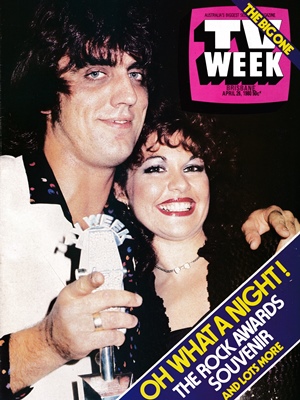
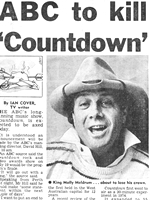 Countdown continued through to the 1980s but inevitably as the decade went on the show’s influence and popularity was waning. Listening habits were changing and music videos were becoming increasingly accessible via other programs. The breaking point came in 1987 with Countdown and Sounds competing with a slew of new arrivals — Video Hits (Ten), Night Shift (Ten), MTV (Nine) and ABC’s own Rage. The situation led Countdown to pursue a new format, dubbed Countdown Pirate TV or CDP TV, which wiped out much of what made Countdown what it was and reduced it to a show that paled in comparison to its former self and to its new rivals. Although some elements of the ‘classic’ Countdown were reinstated after a few weeks, it seemed the damage was done and ABC ended up axing the program in June of that year.
Countdown continued through to the 1980s but inevitably as the decade went on the show’s influence and popularity was waning. Listening habits were changing and music videos were becoming increasingly accessible via other programs. The breaking point came in 1987 with Countdown and Sounds competing with a slew of new arrivals — Video Hits (Ten), Night Shift (Ten), MTV (Nine) and ABC’s own Rage. The situation led Countdown to pursue a new format, dubbed Countdown Pirate TV or CDP TV, which wiped out much of what made Countdown what it was and reduced it to a show that paled in comparison to its former self and to its new rivals. Although some elements of the ‘classic’ Countdown were reinstated after a few weeks, it seemed the damage was done and ABC ended up axing the program in June of that year.
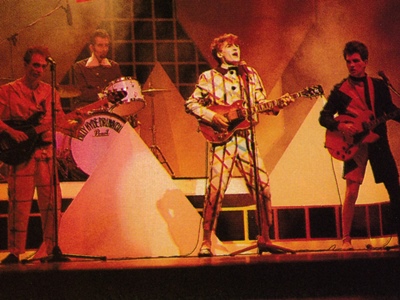
But just as Countdown came onto the scene with a bang in 1974, it was destined to go out just as loudly. Following the last show, the presentation of the Countdown Music And Video Awards, held at the Sydney Entertainment Centre on 19 July 1987, served as Countdown‘s swansong. Gavin Wood, the show’s longtime booth announcer who had been let go in the CDP revamp, returned for the big finale. John Farnham’s career had come full circle and just as he was part of Countdown in its earliest days as Johnny Farnham, he was there again as a chart-topper as the show bowed out. And Molly Meldrum gave the show’s finale its ultimate punchline — by removing his trademark cowboy hat to reveal a bald head. Years later, he confessed that his shaved head was a reference to Midnight Oil‘s bald-headed lead singer Peter Garrett, parodying the iconic band’s steadfast refusal to ever perform on Countdown.
Despite Countdown being cancelled, ABC was not about to let the Countdown name disappear. The spin-off Countdown magazine continued publication well after the show’s demise. And in 1989, ABC hired Meldrum as a consultant for a new weeknight program, Countdown Revolution, that ran for two years.
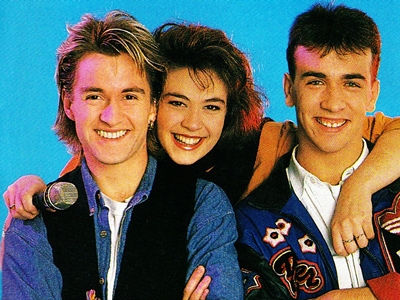
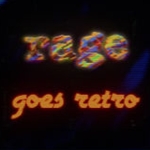 Even now, the Countdown legacy continues. Every year, Rage devotes a month to retro music programs from the ABC vaults, such as GTK, Hit Scene, Rock Arena and Countdown — or at least those that have survived the many purges that were inflicted on the ABC archives in the 1970s and 1980s. Sadly, huge swathes of programs have been lost forever in the name of re-using videotape. ABC iview also features interviews from Countdown and the 2017 tribute series Classic Countdown.
Even now, the Countdown legacy continues. Every year, Rage devotes a month to retro music programs from the ABC vaults, such as GTK, Hit Scene, Rock Arena and Countdown — or at least those that have survived the many purges that were inflicted on the ABC archives in the 1970s and 1980s. Sadly, huge swathes of programs have been lost forever in the name of re-using videotape. ABC iview also features interviews from Countdown and the 2017 tribute series Classic Countdown.
Meldrum went from Countdown to a long run as music correspondent for Hey Hey It’s Saturday. He was inducted into the TV Week Logie Awards Hall Of Fame in 2012. Two years later, both Meldrum and Countdown were inducted into the ARIA (Australian Recording Industry Association) Hall Of Fame. It was the first time that a non-musician and a TV program were recognised with the honour. And in 2016, Meldrum was the subject of the mini-series, Molly.
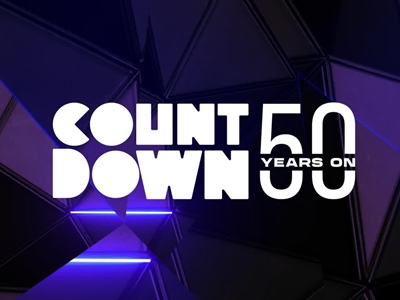
ABC is commemorating the 50th anniversary of Countdown with the special, Countdown 50 Years On, scheduled for 16 November at 7.30pm. Hosted by Myf Warhust and Tony Armstrong, the special features Daryl Braithwaite, Joe Camilleri, Kate Ceberano, GANGgajang, Marcia Hines, Grace Knight, Russell Morris, Leo Sayer and Ross Wilson as well as contemporary performers Electric Fields, Kate Miller-Heidke, Nooky, Regurgitator and Katy Steele covering classic Countdown hits.
The special will also include behind the scenes stories and interviews from Countdown’s 13-year run, with never-before-seen archival footage.
During November, ABC radio is hosting Countdown In Your Town live events in Adelaide, Brisbane, Perth and Newcastle, and ABC local radio across Australia will also present the special Countdown’s Top 20 Greatest Moments at 6.00pm on 9 November.
[This post is a revision of Countdown turns 40, published in 2014]
Source: ABC. TV Week, 30 November 1974, 7 December 1974, 22 October 1994. TV Times, 7 December 1974, 3 December 1977, 30 June 1979. The Sun News-Pictorial, 26 June 1987. Countdown Annual, 1987. Glad All Over: The Countdown Years 1974-1987, Peter Wilmoth, 1993.
